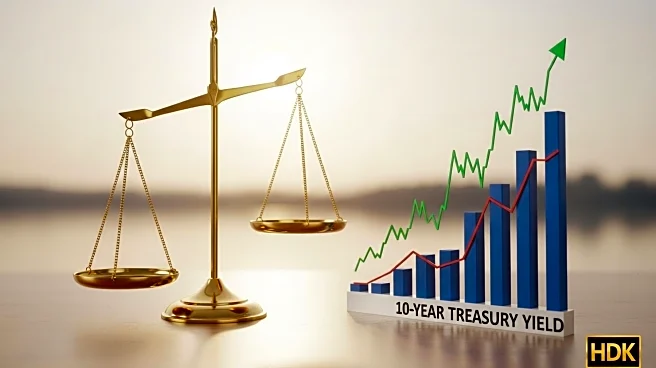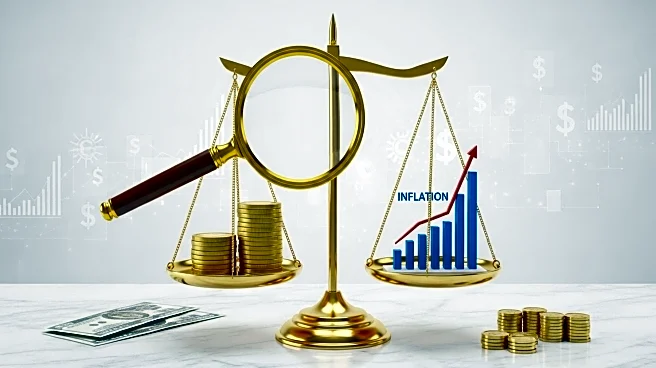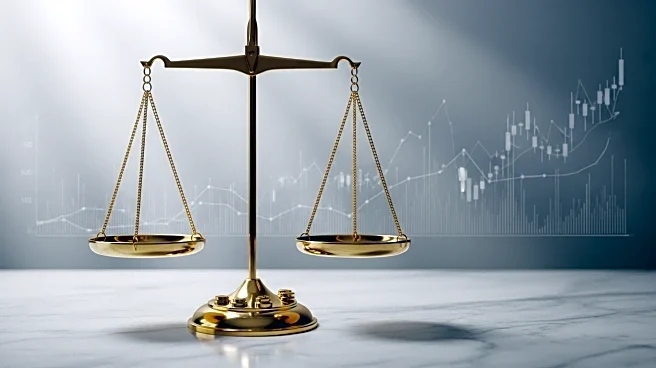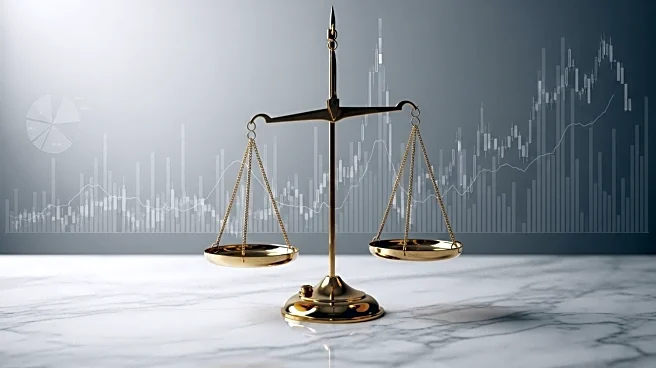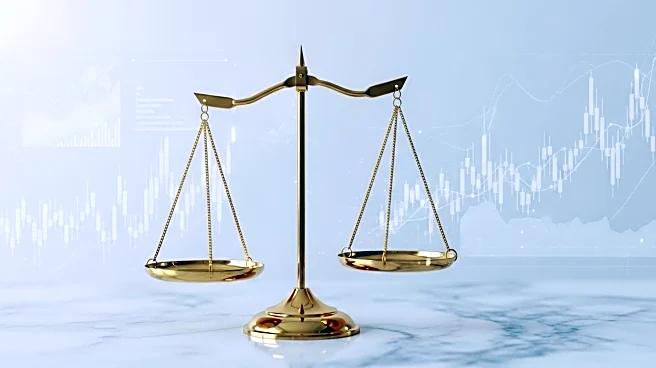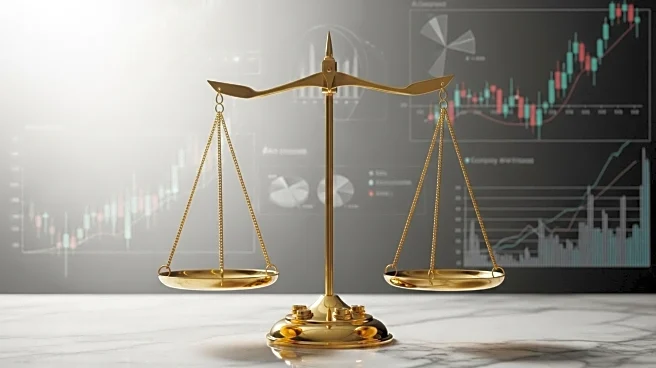What's Happening?
Gold futures experienced a decline on September 18, following the Federal Reserve's decision to reduce its benchmark interest rate by 25 basis points. December gold contracts settled $16.40 lower, marking a 0.44% decrease to $3,678.20. Similarly, silver futures fell by $0.03 or 0.08%, closing at $42.12. The decline in precious metals is attributed to the strength of the U.S. dollar over the past two trading sessions. Market analysts suggest that investor disappointment with the Federal Reserve's cautious approach to monetary easing contributed to the decline. The central bank's quarter-point rate cut did not meet some market expectations for a more aggressive half-point reduction, leading to a reassessment of the Fed's dovish stance. Despite the rate cut, the Federal Reserve's policy communications were perceived as less accommodative, causing intraday volatility in gold prices.
Why It's Important?
The decline in gold and silver futures highlights the complex relationship between monetary policy, currency dynamics, and investor sentiment. Precious metals typically benefit from lower interest rates and concerns over currency debasement. However, the Federal Reserve's measured pace of easing has prompted investors to reevaluate their positions in these safe-haven assets. The economic backdrop presents a mixed picture, with a sharp decline in initial jobless claims indicating some labor market resilience, but broader employment trends showing a slowdown in job growth. This situation underscores the challenges faced by the Federal Reserve in balancing economic support with market expectations. The outcome of these dynamics could impact investor strategies and the broader financial markets.
What's Next?
Future Federal Reserve meetings will be closely watched for additional monetary easing signals. Investors may adjust their positions in response to any changes in the central bank's policy stance. The ongoing strength of the U.S. dollar and its impact on precious metals will also be a key factor to monitor. Market participants will likely continue to assess economic indicators, such as employment data, to gauge the health of the U.S. economy and the potential for further monetary policy adjustments.





